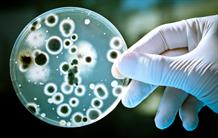Scientific result | Health & life sciences | Bacteria
Finding Ways to Disarm Bacteria
 © AlexRaths
© AlexRaths
Folder chapeau
Scientists from IBS and their partners have understood one of the molecular mechanisms that bacteria use for survival when facing our immune defenses.
Published on 24 April 2017
Body text
Humans are equipped with several defense mechanisms to resist bacterial infection. For example, white blood cells can produce nitric oxide (NO), a gas compound that is toxic to living organisms. Over the course of evolution, bacteria have developed a biological arsenal to counteract this immune response. In particular, they synthesize a protein called NsrR, which plays an essential role in the detection of NO and in the bacteria's resistance to this gas. This regulatory protein "spots" the NO molecules and controls the activation or inactivation of certain genes.
In collaboration with colleagues at the University of East Anglia (UEA) in the UK, a team of scientists from IBS has used radiocrystallography to determine the structure of NsrR and has shown how this protein detects NO. NsrR contains a specialized type of cofactor—an additional component necessary for activity of a protein—called an iron-sulfur cluster. Despite the fragility of the different conformations of the protein, the scientists were able to access its structure when the cofactor was bound to the protein, and when the cofactor was absent. The differences observed allowed them to understand the mechanism used to sense the presence of NO molecules. More specifically, structural changes between the two forms showed how NsrR toggles between a DNA-binding conformation and a non-binding one, allowing it to regulate the activation or deactivation of the production of enzymes that fight nitric oxide by neutralizing it.
The processes allowing pathogens to survive human immune responses are complex. These results support the development of intervention strategies to disable this defense mechanism in bacteria.
Top page